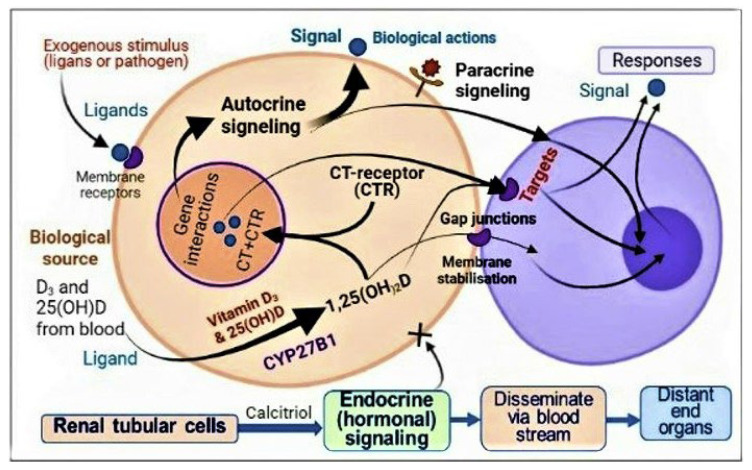Figure 4.
Illustrates the intracellular generation of calcitriol in immune cells that activate autocrine and paracrine signalling mechanisms. Once vitamin D and 25(OH)D enter the peripheral target cells (e.g., immune cells) through passive diffusion and/or active endocytosis, CYP2R1 and CYP27B1 hydroxylate them to form 1,25(OH)2D (calcitriol). Immune cells contain abundant CYP2R1, CYP27B1, and calcitriol receptors (CTR). Calcitriol-CTR complexes enter the nucleus and interact with the genome, regulating up or down the expression of genes as described in Section 1.2. This leads to an increased expression of anti-microbial peptides, antibodies, etc., and decreases the expression of inflammatory and oxidant cytokines.

